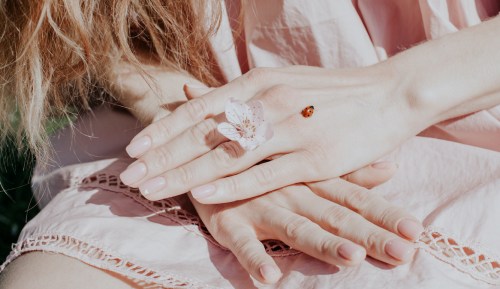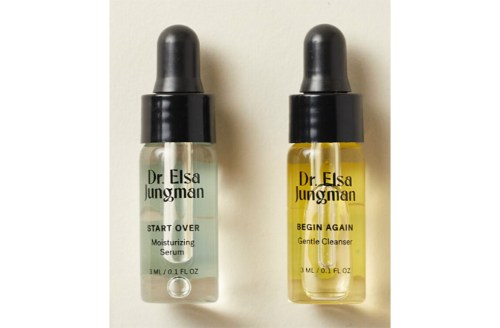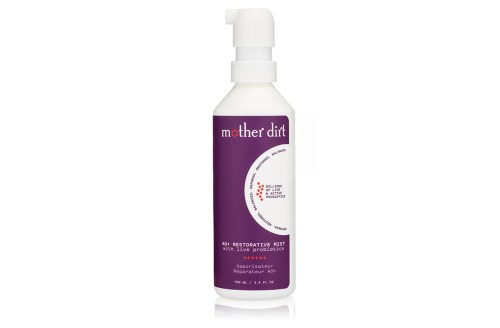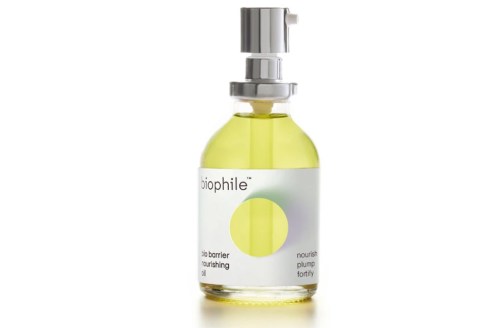Our editors independently select these products. Making a purchase through our links may earn Well+Good a commission
Supporting Your Skin’s Microbiome Is No Small Task—Here’s Where To Start
The microbes of your microbiome are essential to keeping your skin happy and healthy. Here's how to support them according to the pros.

The next time you’re feeling lonely—and let’s be honest, it’s been an especially lonely year—consider this: Cozied up nice and close, snuggling on your skin, are over a trillion tiny best friends you didn’t know you had. They are the microbes of your microbiome—organisms like bacteria, fungi, viruses, mites—and they work day and night not only keeping you company, but keeping you healthy and happy and alive. You’re never without them. You’re the guest of honor at their permanent party.
Experts in This Article
dual board-certified dermatologist and dermatopathologist
Alison Cutlan is the founder and creator of Biophile.
founder of Codex Beauty
Jasmina Aganovic is the president of Mother Dirt.
Laura Marinelli, PhD is the scientific advisor at Ellis Day.
Paul Schulick is the co-founder of For The Biome to awaken consciousness and spread a simple message: beauty is connection.
heart surgeon and author of The Plant Paradox
“The impact of microbiota is global and universal, and central to our very existence,” says chemist Marie Veronique Nadeau, the founder and head of research and development at Marie Veronique. “Most microorganisms are really nice creatures that you would want as your neighbors.” According to Nadeau—and a growing group of microbiome advocates—the single most important thing we can do for our skin is support those millions of microorganisms. The best way to do that, however, is still unclear. Though we know the microbiome is a critical component of skin health and intrinsically linked to the entire immune system, there’s still much to be debated and discovered.
So while we all wait patiently as researchers work to demystify this new frontier of skin care, we asked eight experts to share the basics of the skin’s microbiome.
What is the skin microbiome?
Also called the skin flora, the skin microbiome is the garden of organisms that inhabits our skin. “The microbiome’s main role is to bolster the skin’s ability to keep out pathogens and maintain a good skin barrier function,” says Aegean Chan, MD, a board-certified dermatologist in Santa Barbara.
As explained by Barb Paldus, PhD, a biotech scientist and founder of Codex Beauty, this crucial role simply can’t be understated: The microbiome strengthens the skin barrier and serves as the first line of defense against pathogens and infections. It communicates with our immune system to call for help during SOS situations. It minimizes damage from UV rays and environmental pollutants by taking the hit for us. It retains moisture, slows the signs of aging, and helps us heal from cuts and scrapes and burns.
So what is it, exactly? “The mix of organisms is typically made up of about 1,000 different strains of bacteria and 80 types of fungi, in addition to the mites and viruses,” explains Paul Schulick, a master herbalist and founder of For The Biome. “The organisms can be broken into three groups: commensals, symbionts, and pathogens.” He explains that commensals help maintain the balance between “friendly” and “opportunistic” microorganisms. Symbionts are highly beneficial and produce postbiotics, which help fortify the skin’s moisture barrier. Pathogens have a rep as the “bad guys,” but they’re not necessarily bad—they just tend to be opportunistic and can trigger skin issues if they get out of balance.
Completely unique to you, the composition of your microbiome is kind of like a fingerprint (if that fingerprint was dynamic). It begins at birth—when, after nine months of a perfectly sterile environment in the womb, your skin is exposed to the wild wonder of the world’s organisms for the very first time. From there, it changes and evolves based on your activities and environment; it reflects where you’ve been, what you’ve touched, how you’ve felt. And, perhaps most importantly, it adapts to provide exactly what your skin needs most in real time.
Left to its own devices, the microbiome teems with diverse life. That diversity fosters balance. Each of the organisms play a specific role—and the skin thrives. That is, of course, if the skin microbiome is functioning properly. And that’s a big if.
What can impact the skin microbiome?
We know that microbial diversity and balance is crucial, but here’s the thing: Most modern lifestyles aren’t exactly conducive to supporting it (enter: antibiotics, antibacterial soap, disconnection from nature, 12-step skin-care routines, steamy showers, and our general cultural understand of what it means to be “clean”). In fact, some skin scientists now believe that an act as seemingly innocuous as washing our faces—once seen as the pillar of basic skin care—is just the first item on a long list of things we do daily that can damage our skin flora.
According to Elsa Jungman, PhD, a skin scientist and founder of Dr. Elsa Jungman skin care, the skin flora is directly affected by our skin-care regimens—which are sometimes too intense. “I had been studying skin science for a very long time when suddenly, I noticed this boom of heavy skin-care routines,” she says. “Everybody was asking me about layering active ingredients and double cleansing, and I thought, ‘Whoa, we need to take a step back.’ From what we understand on a biological level, this isn’t doing our skin any good.”
‘We’ve never used so many products, and our skin has never been worse.’ —Elsa Jungman, PhD
Dr. Jungman points out that skin care is often marketed in a way that encourages the use of more-and-more products. “But if having a heavy skin-care routine was beneficial, I don’t think that 70 percent of women today would have sensitive skin,” she says. “We’ve never used so many products, and our skin has never been worse.” She says that in addition to the products we apply, the microbiome is also susceptible to damage from factors like household irritants, climate, pollution, gut health, hormonal changes, and even mental health.
“Chronic stress is a biggie,” confirms Schulick. “It increases the fight-or-flight hormone, cortisol, which can increase sebum production.” This shifts the skin’s environment, he says, which in turn changes the composition of your skin microbiome. Dietary choices and lack of exercise can have a similar effect.
OK, so let’s take a quick pause. If you’re currently panicking about the lifetime of damage you might have inflicted upon your microbiome—double-cleansing, over-exfoliating, constant stress!—don’t, well, stress. “Studies have shown that our microbiome is very resilient,” says Laura Marinelli, PhD, a microbiologist and scientific advisor at Ellis Day Skin Science. “So even if you haven’t taken care of it in the past, it’s never too late to start paying more attention to these tiny skin guardians and incorporating more microbiome-friendly products into your skin-care routine.”
What is microbiome-friendly skin care?
If you want to boost your microbiome, the first step is accepting a cold, hard truth: Many skin-care products are not conducive to a healthy flora. By using harsh products regularly in our regimens, some experts say that we risk further disruption of the microbiome. A disrupted biome creates a new set of problems…which often prompts us to apply more skin-care products…and the vicious cycle continues.
Microbiome-friendly skin-care brands are working to solve this dilemma by creating gentle, supportive skin-care that helps nourish the microbiome—or, at the very least, tries really hard to just not damage it.
Every microbiome-friendly skin-care brand has its own approach and formulations, of course, but many are rooted in some shared principles: Simplification is key (using fewer products with fewer ingredients). Waterless formulas are preferred when possible (as they don’t require potentially harmful stabilizers and preservatives). Overall, creating gentler products is the goal (as many popular ingredients can be disruptive).
Some brands also aim to boost the microbiome by adding prebiotics, probiotics and postbiotics to topical skin-care products—but this particular category is a bit like the wild west in that it’s very new and completely unregulated. “There’s compelling data showing that topical probiotics can improve acne and atopic dermatitis, and there’s limited evidence showing probiotic products may promote the growth of healthy bacteria,” says Dr. Chan. “I think there’s major potential in this area, but there’s a lot we’re still learning and much to work out before topical probiotics become something you’d get in treatment at a dermatologist’s office.”
If you’re considering a probiotic product (keep reading for recommendations), be sure to research the brand thoroughly and investigate the ingredients. “A big myth is that having a ‘probiotic’ in a product will automatically make that product good for the skin and microbiome,” says Alison Cutlan, creator and co-founder of Biophile Skincare. “But it all depends on the other ingredients and whether it’s truly microbiome-friendly.” She suggests checking the formula to ensure it doesn’t contain added irritants that will counteract any benefit of probiotics.
What are the best ways to support and protect the skin microbiome?
Could the secret to good skin be less skin care? “Skinimalism” has entered the chat. Some experts, like Dr. Jungman, are advocating for a radically minimalist approach that allows the microbiome to thrive—and subsequently, the skin to, as well—just as nature intended. Dr. Jungman points out that every product used has the potential to disrupt the microbiome, which is why it’s key to maintain a minimal routine using products with fewer ingredients (she suggests just cleanser and oil-based moisturizer, followed by SPF).
“The data we have shows that on average, we use 126 unique ingredients per day on our skin,” Dr. Jungman says. “And each of those ingredients can potentially interact with your microbiome—often killing bacteria or damaging the skin barrier.” She suggests looking at your routine and asking if you really need that double-cleansing method (it depends) or that toner (probably not), or if you even need to wash your face at all (if it’s the morning, not likely, unless you’re using retinol at night). “The less you do, the less you use, the better you’re optimizing your skin for the long term.”
There are also a few ingredients you should be especially apprehensive about: antibiotics, antibacterials (like benzoyl peroxide and essential oils), and alcohol, as these can reduce your skin’s protective microbes and leave it vulnerable.
And despite the skin-care world’s heavy emphasis on acids as the holy grail for maintaining a glow, you’ll want to avoid over-exfoliation. Sure, it’s fine occasionally–but your skin naturally sheds its own dead skin cells, so you shouldn’t need to be buffing much beyond that. Nadeau explains that both chemical exfoliation (like peels and acids) and physical exfoliation (like scrubs and dermabrasion) disrupt the natural oils that are a mainstay of the skin barrier—and without it, the microbiome could starve.
OK, so we know what you’re thinking: ‘But what about using additional products for targeting specific skin concerns—like breakouts, eczema, acne, aging? Surely that’s okay, right? Dr. Jungman points out that once you’ve established an optimized microbiome, the whole point is that you might not have all of those concerns—or need extra products—in the first place.
But perhaps most importantly of all, don’t stress it too much. Dr. Chan says that as long as your skin is generally healthy and not irritated or sensitized, you don’t need to toss all your favorite products. “Just practice all things in moderation, don’t overdo it with acids, and make sure to moisturize,” she says.
The best microbiome-friendly skin-care products

Dr. Elsa Jungman “Start Over” Bundle — $98.00
While Dr. Jungman believes skin care should be simple, she knows it’s certainly not one-size-fits-all for everyone—which is why her namesake brand uses a comprehensive intake (think: skin goals, lifestyle, hormones, environment) to deliver a customized two-step routine (along with skin-supportive facial yoga exercises) to each and every customer. The regimen includes an oil cleanser and an oil moisturizer, each formulated with fewer than five ingredients, for maximum glow and minimal microbiome disruption. “Our goal is to help you really take control of your skin care,” says Dr. Jungman. “We teach you how to listen to your skin and stop layering so many products for a less-is-more approach.”

Mother Dirt AO+ Restorative Mist — $69.00
A leader in the probiotic skin-care space, Mother Dirt aims to bottle the bacterial benefits of dirt with their cult favorite AO+ Mist. “It uses ammonia-oxidizing bacteria, a ‘peacekeeper’ bacteria, meaning it’s critical in promoting balance in ecosystems,” says Aganovic. “It also once used to exist on our skin until we cleaned it away.” The product claims to restore balance to all types of skin and improve clarity, smoothness, texture and appearance. Mist anytime, anywhere—on a fresh face, over makeup, whatever—and, as it contains live bacteria, be sure to stash it in the fridge.

Marie Veronique Barrier Restore Serum — $90.00
Beloved by barrier enthusiasts, this serum was initially developed for those with weakened barrier layers—but clinical trials revealed that everyone who used it reported an increase in skin comfort, less need for heavy moisturizers and an absence of dryness, even in extreme conditions. “It supplies the ingredients our skin uses to keep corneocytes, found in the top layer of skin, plump and round,” says Nadeau. The serum replaces natural moisturizing factor (NMF), which keeps skin cells hydrated—and then prevents loss of NMF through a liposomal sealing system.

Codex Beauty Bia Skin Superfood — $50.00
The Bia Skin Superfood cream—which can be used on face, hands or body—relies on the moisturizing and rejuvenating properties of immortelle and marshmallow to provide hydration, protect the skin barrier and soothe dry, flaky or irritated skin. (If you want more proof before purchasing, results from the product’s clinical trials can be found on the product page.) “All Codex products include a probiotic, a humectant and an emollient,” says Dr. Paldus, who also adds this pandemic skin tip: “Applying Skin Superfood to the hands after repeated use of hand sanitizers will minimize damage to the skin microbiome and leave your hands nourished.”

Ellis Day Skin Science Wild Resilience Active Phage Serum, $85 — $85.00
Ellis Day is dedicated to resetting and balancing the microbiome through one hero product: a serum that aims to reduce blemishes, hormonal breakouts, redness and inflammation while making skin more resilient (check out their clinical trial results here). “The formulation contains Cutiphage, a proprietary blend of bacteriophages that naturally live on healthy skin,” explains Marinelli. “The phages target and kill blemish- and inflammation-causing strains of Cutibacterium acnes bacteria. So unlike antibiotics or ingredients such as benzoyl peroxide, which kill a broad array of bacteria, the serum only kills a specific type of bacteria and won’t harm healthy skin microbes.” She adds that the phages are naturally found on healthy skin, so they have been fine-tuned by evolution to function and thrive in this environment.

For The Biome Restore Essence Spray — $70.00
Looking for a quick pick-me-up that’ll offer an instant refresh and long-term skin support? “One of our best products for supporting a healthy skin barrier is the Restore Essence Spray,” says Schulick. “It is a liquid ferment rich in prebiotics and postbiotics—and when they interact with the skin’s microbiome, they produce hydrating actives that help fortify barrier function.” The mattifying mist combines two of the most potent honeys found in nature to prime for pollution protection and lead to a more even skin tone.

Biophile Bio Barrier Nourishing Oil — $118.00
Biophile uses a bio-fermentation process to create easily absorbed, nutrient-dense “biotic broths” (formulated with probiotic bacteria, botanicals and fungi) that support the skin’s microbiome. “These biological formulas do more with less by synergizing more effectively with the skin,” says Cutlan. “The Bio Barrier Oil is made with a bio-fermented green tea seed oil that penetrates deeply and has a barrier-reinforcing effect due to the free fatty acids and glycolipids formed during fermentation.”
Oh hi! You look like someone who loves free workouts, discounts for cult-fave wellness brands, and exclusive Well+Good content. Sign up for Well+, our online community of wellness insiders, and unlock your rewards instantly.
Sign up for the Well+Good SHOP Newsletter
Get exclusive deals on wellness, beauty, fitness, and food products that have been hand-picked by our editors.
Got it, you've been added to our email list.










